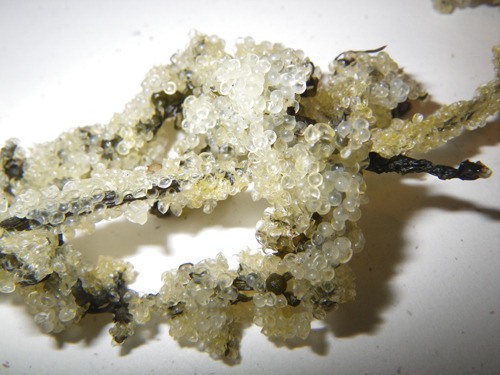For the second year in a row, herring have spawned on the Eastsound waterfront. Volunteers from the Indian Island Marine Health Observatory collected eggs to confirm the spawning event over the Easter weekend. After cormorants, bald eagles, osprey and seals dined on adult herring, 100s of surf scoters, goldeneyes, buffleheads and gulls feasted on the eggs for days. Over a 1,000 migratory seabirds shared in the fishy bounty.
Very few herring may survive to hatch and leave East Sound, where they would help feed seabirds that congregate and nest in deeper waters such as rhinoceros auklets, pigeon guillemots and the endangered marbled murrelet. Recent research by Kwiáht scientists has found that juvenile Chinook and Coho salmon also prefer small herring to other “forage fish”.
It is unclear why herring have returned to Fishing Bay, although Kwiáht ecologist Russel Barsh believes he has a clue. [Kwiáht is the Lopez-based Center for Historical Ecology of the Salish Sea.]
“These herring are spawning mainly on sargassum [brown seaweed], some on dwarf eelgrass, two non-native species that have been spreading for many years and enlarging the total vegetated area of Fishing Bay,” he said. “These species may not be native to our waters, but they are gradually recreating the kind of dense underwater thickets that herring find attractive.”
It is unclear whether there are any adverse impacts of the change to non-native species, Barsh adds.
“The bottom line is that Eastsound herring may be recovering, and this is the time to go gentle with Fishing Bay and Indian Island to give herring and the vegetation that supports them the best chance possible,” he said.
For more info, visit www.kwiaht.org.




